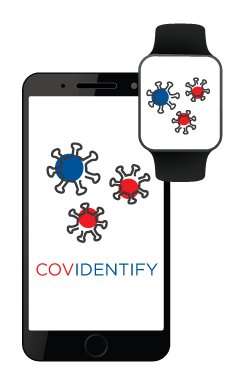How you can help scientists better understand COVID variants with wearable devices


Duke researchers are investigating whether data from your smartphone and smartwatch can help determine if you have COVID-19 and how severe the infection could get. Their work has the potential to help avoid future pandemics, but they need more participants to enroll.
The COVIDentify study, led by Jessilyn Dunn, Ph.D., and her team in the Duke BIG IDEAs Lab, uses mobile and wearable devices as tools to learn more about how the novel coronavirus spreads in our community. In collaboration with Ryan Shaw, Ph.D., RN, and his team at Duke Mobile App Gateway in the Duke School of Medicine’s Duke Clinical and Translational Science Institute (CTSI), the team distributed wearable devices to underserved populations in North Carolina at the beginning of the pandemic. However, because the virus continues to mutate and produce new variants like omicron, COVIDentify needs new participants to enroll to provide data reflecting the current state of the virus.
“Increasing the number of people participating in our study is more important now than ever as the omicron surge continues,” said Dunn. “This provides an unprecedented opportunity to collect this rare and unique data that will make our work much more powerful to prevent future pandemics.”
The BIG IDEAs Lab is asking for more people to become involved. The commitment is easy. Participants are asked to link their smartwatch to enroll in the study—a process that takes approximately a minute of their time. Those who have had COVID are asked to fill out a one-time 10-minute survey, while those who have not yet had COVID are asked to answer a few questions daily for up to a year.
The predictive models that researchers are developing as part of COVIDentify have the potential to help avoid future pandemics. While COVIDentify researchers work to understand coronavirus, they have taken a different approach thanks to digital biomarkers and the use of mobile and wearable devices to learn more about people’s health.
The study looks at how both the body and behavior change when people get sick. For example, early results show that resting heart rate generally increases, physical activity generally decreases, and sleep becomes disrupted when an individual is not feeling well. The study aims to provide important information on who should be tested for coronavirus through their screening method, which may be used in tandem, or possibly even instead, of contact tracing.
Source: Read Full Article